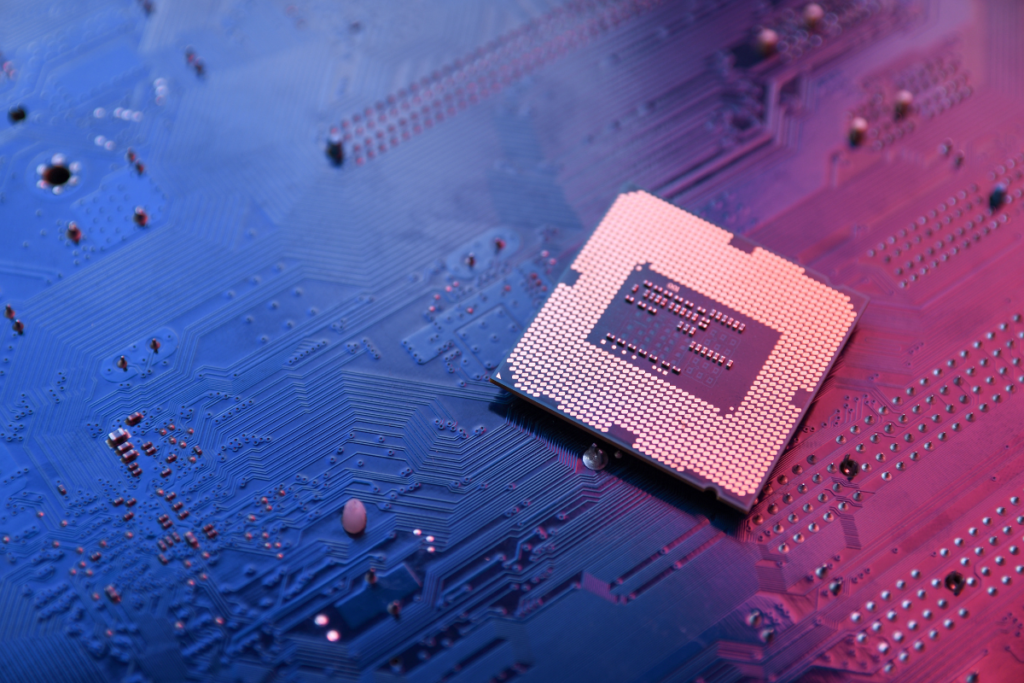In a recent webinar on The CHIPS Act and its impact on intellectual property, Benjamin Brown, Chief IP Counsel, Onto Innovation, and Shayne Phillips, Director, Analytics Solutions, Anaqua, discussed key aspects of the CHIPS Act. With an investment of over $52 billion, the CHIPS Act aims to bolster U.S. leadership in semiconductor manufacturing and catalyze R&D and innovation.
Current Semiconductor Landscape
Global demand for chips is growing extremely fast, with the increasing need for smart and connected devices. In a recent McKinsey Semiconductor Report, about 70 percent of global semiconductor growth is predicted to be driven by just three industries: automotive, computation and data storage, and wireless.[1]
Using the industry-leading patent analytics from AcclaimIP™, Shayne Phillips shared a few observations regarding the current semiconductor landscape:
- The number of semiconductor patents filed in the U.S. has been the highest. However, most of these patents originated from APAC or EU countries.
- Compared to patent applications for semiconductor chip manufacturing, actual chip manufacturing within the U.S. shows a vast disparity with APAC countries. While in APAC countries, chip manufacturing is high and patent applications for chips are lower. (Fig.1)
- The number of patents originating from U.S. universities needs to catch up to the patents originating from universities from the rest of the world. Looking back 20 years ago at an equal patent contribution, this is a dramatic shift.
Benjamin Brown noted that the U.S. has maintained a lead in logic chip production. However, during the last 18 months, strained global supply chain issues around semiconductor chips have especially affected the automotive sector. This has exposed the interdependence of the U.S. economy with other countries.

Fig.1: Current Semiconductor Patent Landscape
CHIPS Act 2022
The CHIPS Act provides $52.7 billion for American semiconductor research, development, manufacturing, and workforce development. These benefits can be divided into three main categories:
- $39 billion allocation as manufacturing incentives to support and incentivize the construction, expansion, and modernization of fabrication facilities.
- $13.2 billion for R&D activities would facilitate faster prototyping, piloting, and scaling to production and workforce development.
- $500 million to provide for international information communications technology security and semiconductor supply chain activities.
The CHIPS Act also provides a 25 percent investment tax credit for capital expenses for manufacturing semiconductors and related equipment.
Key Takeaways
With the CHIPS Act, the government aims to revitalize domestic semiconductor manufacturing and strengthen the supply chain. The speakers mentioned that the CHIPS Act would help:
- Bring leading-edge semiconductor chip manufacturing back to the U.S.
- Expand capacity to make current and mature chips, and critical supplies
- Build an ecosystem by bringing together industry consortia, academia, the private sector, and government agencies such as NSF (National Science Foundation)
- Develop a more inclusive STEM workforce by creating regional high-tech hubs
Way Forward
Since the announcement of the CHIPS Act, multiple U.S. companies have announced investment in building or expanding their fabrication factories.
Taking a cue from the current landscape, Shayne Phillips expects that the CHIPS Act will bring more parity in manufacturing, research, and intellectual property between the U.S. and other regions of the world.
The speakers noted that we might have to wait a few years to see the impact on intellectual property. The patent filing process inherently takes time from patent application to publication (when these applications will appear publicly). With other regions also looking to increase investment in the sector with acts such as the European Chips Act, it will also be interesting to see the global impact of the act.
Benjamin Brown discussed that the CHIPS ACT should have multiple positive outcomes on the ecosystem around the semiconductor manufacturing, including U.S. universities and startups. Additionally, he anticipates there will be more intellectual property coming from startups and midsize companies.
Watch the webinar to learn more.
[1] https://www.mckinsey.com/industries/semiconductors/our-insights/the-semiconductor-decade-a-trillion-dollar-industry
Further Reading




